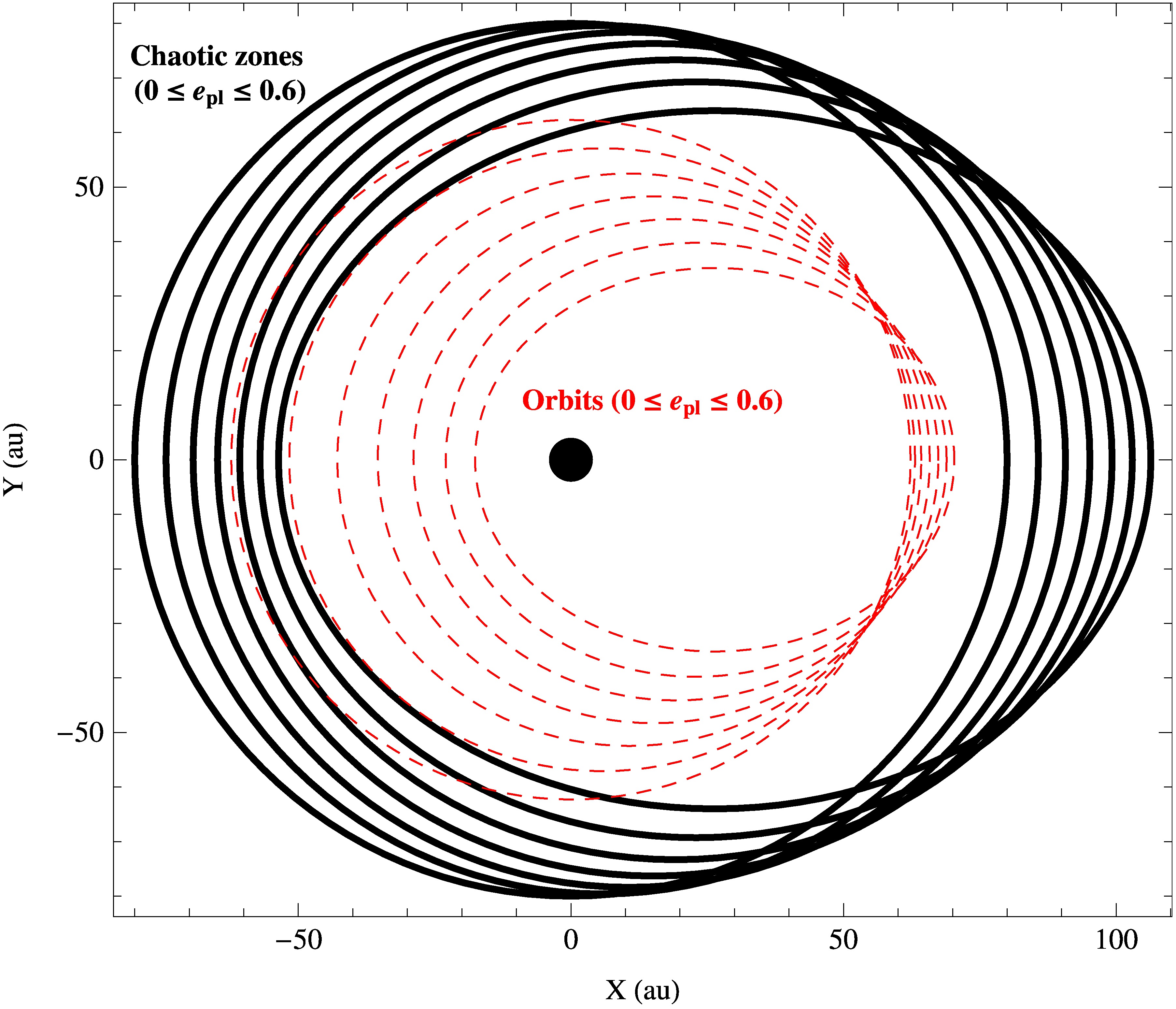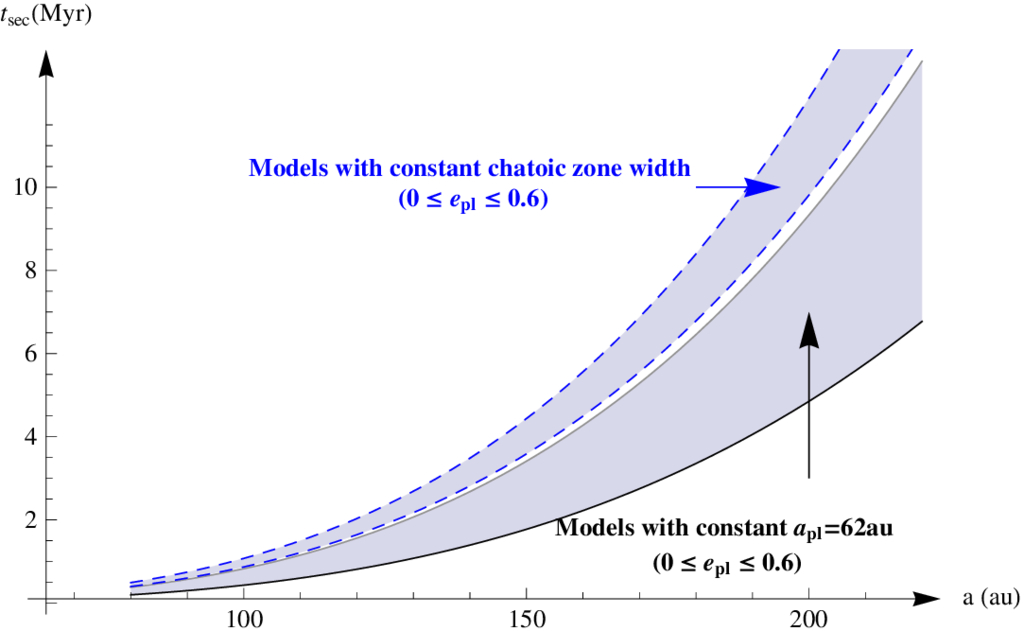Estimating the age of HD95086b - Secular perturbation of giant planet on debris disk
|
Giant planets form a chaotic zone around its orbit. As a result, the bodies originally orbit in the chaotic zone are scattered out and form a dust depleted hole in the disk. Based on the overlapping and the width of high order resonant orbits, the size of this chaotic zone can bee calculated (Wisdom, 1980 for low and Mustill & Wyatt, 2009, for significant planetary eccentricities). The inner edge of the outer dust belt of HD95086 is at ∼80AU. Assuming that this hole is formed by the discovered planet, the radius of the chaotic zone has to be ∼80AU for arbitrary planetary eccentricity. Thus, a model set can be defined in which the size of chaotic zone is fixed for different planetary eccentricities. |
 The ssize of the chaotic zone for different epl. 
Size of the chaotic zone. |
|
It is known that a giant planet perturbs the orbits’ of bodies in its disk. Based on the theory of secular perturbations, Wyatt (2005) has shown that a time-evolving, one armed spiral structure develops for non circular planetary orbits. The time-scale of secular perturbation at a given radius (r) depends on the planetary semi-major axis and eccentricity (tsec ∼ r2(eplapl)^(1/5)). However, in the model set assumming fixed chaotic zone width, the eccentricity dependence is suppressed. Such models have a peculiar feature: the time-evolution of spiral pattern only weakly depends on the planetary eccentricity. Therefore it is worth investigating the evolution of spiral patterns assuming different planetary eccentricities. |
 Secular perturbation time scale for different epl. 
Secular perturbation time scale. |
|
We modelled the gravitational perturbation of a giant planet discovered in HD 95086 debris disk (Rameau et al. 2013) on its debris material by means of N-body integrations assuming 2^18 massless dust particles. Dust particles are assumed to have negligible mass (~0.5Mearth) compared to the star-planet system, therefore their gravitational interactions are neglected. We concern sub-millimetre brightness distribution of the system, thus dust particles are assumed to be 1mm in size in our model, for which case the stellar radiation pressure (beta~0.01) is also negligible. Our model parameters correspond to the debris disk of HD 95086 system (Moor et al., 2013; and Su et al., 2014). The star and giant planet masses are set to 1.7 MSun and 5MJup, respectively. We investigated models in which the planet carves same size (80AU) inner hole independent its eccentricity being in the range of 0-0.6. See an example for epl=0.1 model below. |
|
|
20Myr secular perturbation of 5MJup planet with e=0.1 (Left: N-body simulation 250 000 particles; |
|
| See other simulations assuming different epl: 0.2, 0.3, 0.4, 0.5, 0.6 | |
In preparation, Regály, Zs.; Móor, A.
Conference poster Disc Dynamics & Planet Formation, Larnaka, 2015: download (A4)

